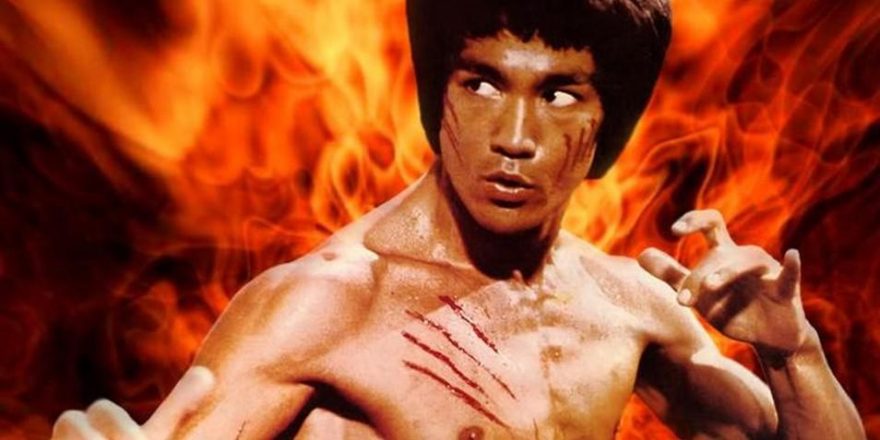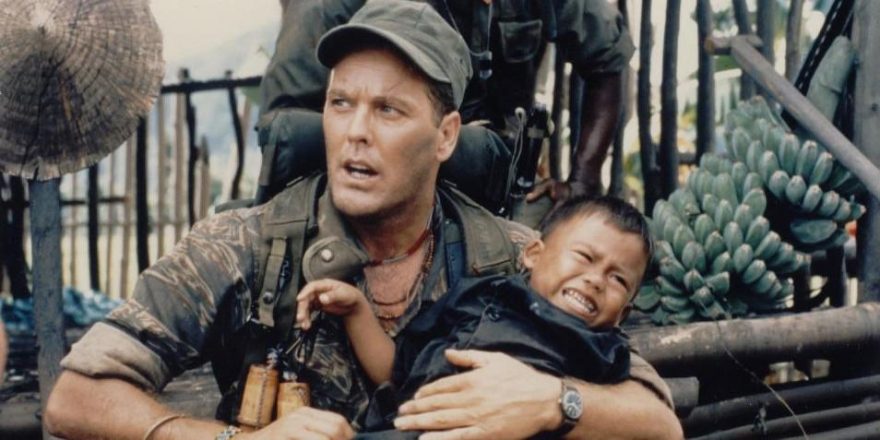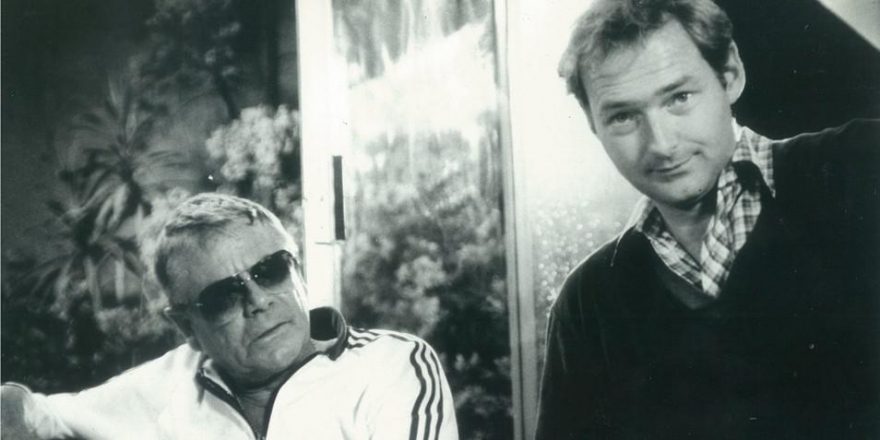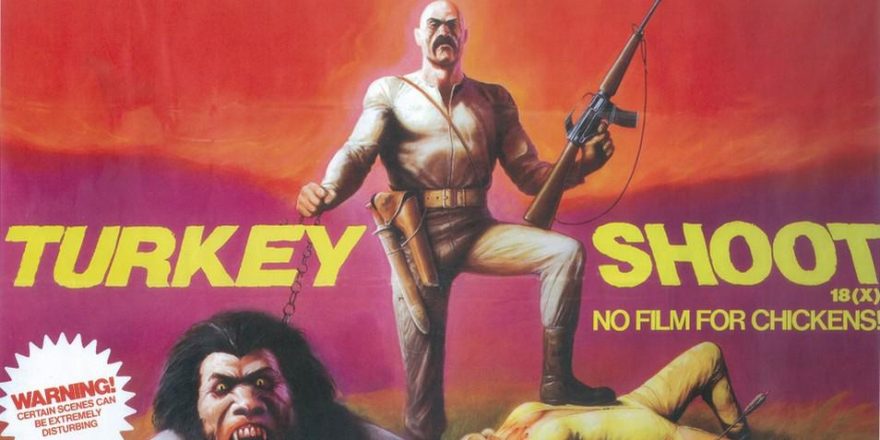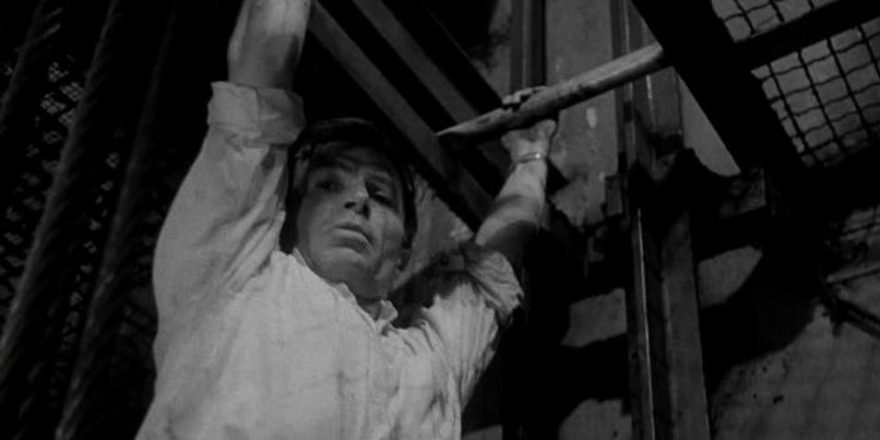On July 20, 1973, I boarded a Cathay Pacific flight from Sydney to Hong Kong to shoot a documentary about Bruce Lee, a new Asian superstar I’d become aware of on a previous visit to the colony, who at the time was still virtually unknown to Western audiences. The forthcoming release of his first American-made action picture, Enter the Dragon, would change all that. I had negotiated with his producer Raymond Chow to interview him for a wide-ranging documentary on Asian martial arts movies to be entitled World of Kung Fu. In my briefcase was a six-page outline I had written about a Chinese Dirty Harry-type cop sent to Sydney on a routine extradition, who then goes after the local crime lord, causing major mayhem. There was subtext poking fun at racist attitudes to Asia prevalent in Australia at the time. I had given it the ironic title Yellow Peril… One culture’s self-critical irony is another culture’s insult. What was I thinking?
Arrival at Kai Tak Airport confirmed the newspaper headlines I had seen at the Jakarta refueling stop: “Bruce Lee Dies.” It was a tragedy for all who knew this luminous personality. An estimated 20,000 people jammed Kowloon streets the day of his memorial. There was a similar response at his subsequent funeral in Seattle. Steve McQueen and James Coburn were among the pallbearers.
Despite his grief and all he was dealing with, Raymond Chow found the time to give me an interview, as did Run Run Shaw, Andre Morgan, and many others. So I ended up making a tribute to Bruce Lee, which played on Australian television several months later. I also published two editions of a magazine, The World Of Kung Fu.
Much has been written about Bruce Lee and his legacy. The official website provides extensive biographical details that will give you a sense of the man, his extraordinary journey and his cultural impact. At age 17, Bruce Lee won both the Hong Kong Inter-School Boxing Championships (with 6 TKOs) and the Crown Colony Cha Cha Championship. It’s that mixture of ferocity and grace that would make his movie martial-arts style unique. When Hollywood hired him to be Kato, the sidekick, in the short-lived TV series The Green Hornet at the princely sum of $400 an episode, Bruce Lee stole the show, and became a national hero to Asian audiences. Then Hong Kong producer Raymond Chow offered him a two-picture deal at $15,000 a piece.
His first film, Táng Shān Dà Xiōng / The Big Boss, is rough-hewn and has lousy lighting but delivers the goods in the second half. Bruce’s charisma is evident in the original Mandarin-language trailer. Don’t you love those title cards?! My favorite Big Boss “big gasp moment” (cut in most countries!) was when Bruce slammed a handsaw into the brain of a luckless opponent with a mighty downswing. But the persona Bruce projected across the Hong Kong media was quite different from the violent defender of the oppressed he portrayed in the movie, which ignored his unique sense of humor. Hong Kong audiences loved his impromptu appearances on Cantonese live TV. He would invade a talk show or a comedy sketch show already under way, cracking jokes, while pretending to be lost, drunk or belligerent. He augmented his macho fan base by becoming every Chinese mother’s favorite naughty son.
His second film, Jīng Wǔ Mén / Fist of Fury, still concentrated on his martial arts skill. It was a more polished production and an even bigger smash at the Hong Kong box office than The Big Boss. I was a promotional consultant to the Australian distributor of the films made by Raymond Chow’s Golden Harvest production company and we released Fist of Fury first, and held The Big Boss (retitled The Chinese Connection) till after Enter the Dragon premiered, a successful strategy. In Fist‘s original trailer, you can see Bruce Lee’s increasing stylistic influence in the staging of the fights.
Lee and Raymond Chow then formed a company together. Their first venture, Měng Lóng Guò Jiāng – literally, “The Fierce Dragon Crosses the River” – cost a little over $100,000. Worldwide theatrical gross was estimated at $85 million. Nice! It’s also known as Return of the Dragon. (You can spend a long time down the wormhole of retitled chop-socky and still be confused.) Once Bruce used it, “Dragon” became the buzzword for multiple Bruce Lee-wannabe movies. When my film The Man from Hong Kong (the movie that evolved from my Yellow Peril idea, which to my amazement Raymond Chow wanted to co-produce with me) was released in Yugoslavia in 1977, the title was Zmaj Unistava Gnijedo, which translates as “Dragon Attacks Nest.” OK. I’ll buy that for a dollar.
Way of the Dragon, written, produced and directed by Bruce Lee, was the first Hong Kong movie to shoot in Europe, and one over which Bruce had total creative control and the freedom to display his comedic side. So for his hero he contrived a character that is an archetypal Chinese country bumpkin, a man so unfamiliar with Western plumbing that he squats on top of the toilet seat. Not many films show a hero challenged by a bowel emergency three times in the first 20 minutes! The urban Chinese audience fell about laughing. The Australian distributor, perhaps excessively toilet-trained as a child, frowned and got me to trim the scenes. In the trailer you may notice an outrageously gay villain. But Bruce was not homophobic. (He believed in being true to one’s core, and is quoted as having said: “Always be yourself, express yourself, have faith in yourself, do not go out and look for a successful personality and duplicate it.”) The humor overall is pretty broad, aimed at Asian audience sensibilities. Lee planned to remake the film in a San Francisco setting, tuned for U.S. audiences.
Way of the Dragon‘s hero riffs on Alan Ladd’s title character from the iconic Western Shane; a pugilist who’s anxious to hang up his fists, he’s forced to go lethal in defense of the innocent, in this case the family who owns a Chinese restaurant in Rome menaced by Mafia thugs. A martial arts hero needs plenty of fist fodder on which to demonstrate his expertise, so Bruce brought in some top opponents, such as Hwang In-shik , a Grandmaster of hapkido, and Chuck Norris, then the undefeated world middleweight karate champion. Bruce had met Chuck at a tournament a few years earlier, and both of them gave martial arts tuition to Hollywood figures such as Stirling Silliphant, James Coburn and Steve McQueen. So Bruce asked Chuck to be his opponent in the set-piece duel to the death in the Roman Colosseum. The fight follows the classic pattern of villain beating up hero till hero finds weaknesses in villain’s technique then counterattacks, wearing him down till the final killer blow. This sequence launched Chuck Norris’ movie career, which continues to this day.
But Way of the Dragon also needed a considerable supply of Caucasians for Bruce to beat up. Exteriors were shot in Rome, but interiors, where most of these slugfests took place, were staged at a Kowloon warehouse. The casting director had to scour the bars and hostels of the colony looking for gwai tau – “ghost heads,” the generic Cantonese term for non-Chinese people, specifically unemployed foreigners of thuggish appearance. The pay was 12 U.S. dollars a day. One eager recruit, John Derbyshire, wrote about his two days of work on a fight scene that would run but a few minutes in the finished film, and was described in Lee’s script with just four Chinese characters – Li da xi ren — “Lee strikes the Westerners.” Derbyshire provided an insight into Bruce Lee’s handling of actors. “Hey, Slim,” Bruce would call him, referencing Derbshire’s tall, lean physique, “let’s try that again — and this time look mean. You hate me, remember? I’m a runty obnoxious little Chink, just stole your woman, trashed your car and pissed in your beer. Whaddya gonna do to me? Huh? Whaddya gonna do? Come on…” Pretty good motivation, I say.
In September 1972, Lee started shooting The Game of Death, a film with an ambitious concept infused with his own philosophy. Lee’s original script built to a climax where he would have to fight his way up a multi-story pagoda, and on each level vanquish a new highly skilled opponent by defining the fatal flaw in his adversary’s style and exploiting it. Allegorically the flaws in fighting style were intended to represent different human failings. Think Kung Fu meets the Seven Deadly Sins. But the shoot was interrupted by the need to proceed immediately with Enter the Dragon, the co-production Raymond Chow had negotiated with Warners. It was to be Bruce’s showcase debut for the English-language market, set for a release in August the next year.
Before he could resume production on The Game of Death, Bruce Lee died suddenly of a cerebral edema. His cause of death has been the subject of controversy, which is addressed in detail among many other aspects of his life in this fansite.
It took five years for Raymond Chow’s Golden Harvest company to figure out a way to finish the movie with only 11 minutes and seven seconds, when edited, of usable Bruce Lee footage. Chow brought in his Enter the Dragon director Robert Clouse. They abandoned Lee’s original script and devised a whole new plot where Bruce plays – guess what? – a martial arts movie star at the peak of his fame whose family is threatened by a ruthless drug syndicate led by Hugh O’Brian, once TV’s Wyatt Earp. Bruce survives an assassination attempt but is wounded – guess where? – in the face, so he has plastic surgery to disguise his appearance and fakes his own death. The film, in questionable taste, even incorporates footage from Bruce Lee’s actual funeral. The stage is then set for Bruce to appear in numerous disguises, dark glasses, false beards, motorcycle helmets…while being played by body doubles Yuen Biao and taekwondo master Kim Tai-chung (who did the high kicks). Some ill-matching close-ups of Bruce Lee from his first three movies are cut into these new fights. But it’s the fights that Bruce actually shot that are what audiences came to see; his combat with Kareem Abdul-Jabbar is worth the price of admission alone.
To justify the jumpsuit Bruce wore for the pagoda fights, the film dresses a bunch of henchmen in striped jumpsuits, and has Bruce’s double steal a yellow and black striped one in time for the climax. It’s been homaged in several films and video games since, most notably in Quentin Tarantino’s Kill Bill Volume 1, when yellow jumpsuited Uma Thurman slices and dices the Crazy 88.
As you can see from the trailer, Chow hoped to broaden the audience beyond Bruce Lee fans by casting two Best Supporting Actor Oscar winners: Dean Jagger, who got the award for his turn in Twelve O’Clock High, and Gig Young, who won for They Shoot Horses, Don’t They? On October 19, 1978, just after The Game of Death was released, 64-year-old Gig Young, a victim of lifelong alcoholism and crippling insecurity, shot his 31-year-old fifth wife, Kim Schmidt, in the head in the third week of their marriage, before putting the pistol in his own mouth. The Game of Death has a macabre cult appeal because it contains the final performances of both a suicide-murderer and a superstar.
However, the tawdry salvage nature of Bruce Lee’s final film does not diminish his legacy. The box-office success of Lee’s movies helped break down racial barriers, and empowered minorities because at last there was an internationally beloved movie hero who wasn’t white. If Way of the Dragon established him as an innovative and eccentric auteur, then Enter the Dragon made him an innovative and eccentric auteur with power to greenlight movies and control his vision, much like Quentin Tarantino is today. He was only 32, with a grasp of the dynamics of action staging that was ahead of the curve. He planned to put spiritual content and Asian values into his forthcoming Hollywood movies. What might his oeuvre have contained if he was still directing today in his seventies and beyond, like Scorsese, Eastwood and Ridley Scott?
In Fist of Fury there’s an underlying message of national pride common to all his films, most evident when Bruce high kicks a sign that once actually hung at the entrance to a Shanghai public park reading, “No Dogs Or Chinese Allowed.” The message is reinforced by the final image of the film, a freeze frame of Bruce fearlessly leaping at a firing squad. Bruce is saying: “We Chinese are not inferior. We are formidable. Watch out.” Nearly half a century later, it seems prescient.



